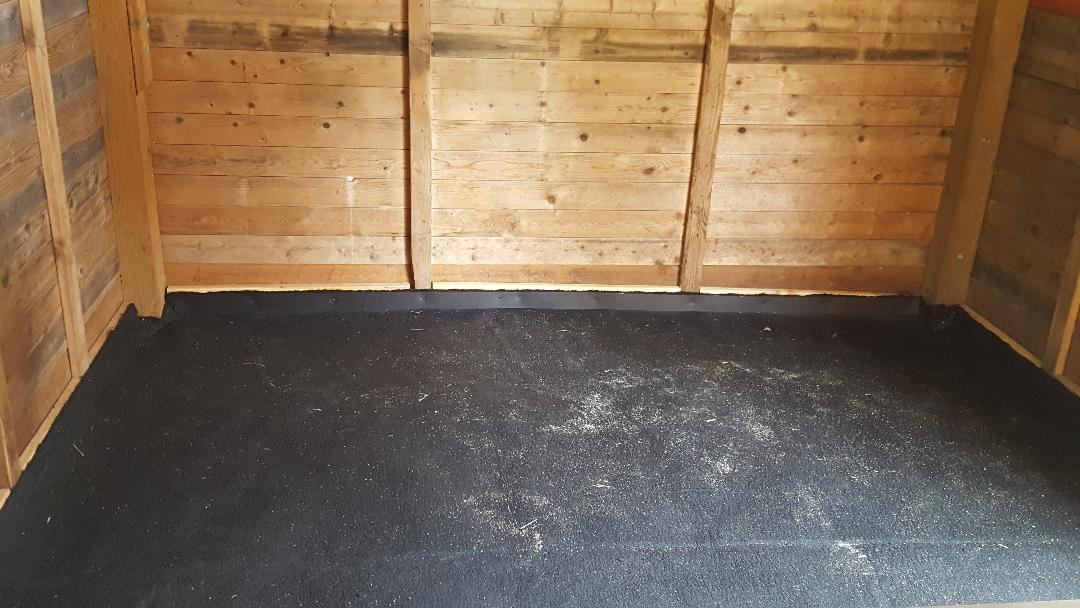You might want to question whether people have shod or barefoot horses on the mats. Most of our horses are shod with drive-in pin studs for traction. If a horse paws, or in front of stall door area, used daily, the mat may need replacing sooner than other mats.
Our box stalls have a thick layer of bigger limestone pieces, 2-3 inches, down about 15 inches, 4-5 inches thick. Then gravel, about 4 inches thick, with the top layer being limestone (fines, crusher run) and sand under the 3/4 inch mats. Stalls drain well, no smell. The other stalls, tie stalls, are board flooring. White Oak seems to last the best, is the hardest wood available in 12ft long x 10inches wide x 2 inches thick. But they still wear down under shod hooves. Usually replaced about every 8-10 years. They have an 8 inch crushed small, limestone layer under the boards which are on cross pieces (sleepers). They have perforated pipe under the limestone that drains outside the barn.
All stalls are well bedded with pine, wood fiber, cleaned to the mat or boards daily. Tie stalls actually are a bedding saver, with not being whirled around, smaller spaces. It is very absorbent, not dusty like sawdust can be. Horses lay down in stalls of both kinds, never any rubs ar scuffs. They are in half a day or night, depending on the season. No free access here.


 Deep Litter method of bedding had a buildup of shavings along one wall in each stall - over a foot in the worst.
Deep Litter method of bedding had a buildup of shavings along one wall in each stall - over a foot in the worst.